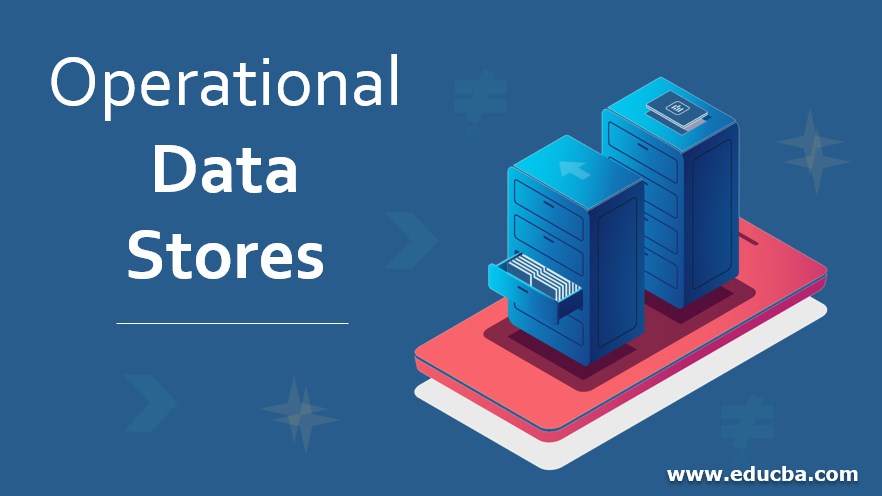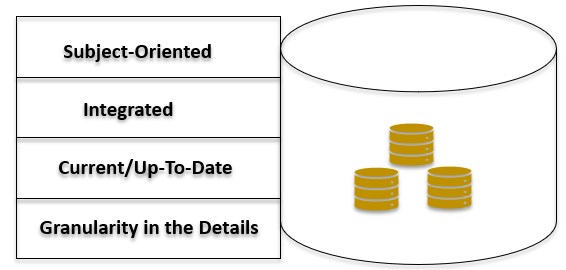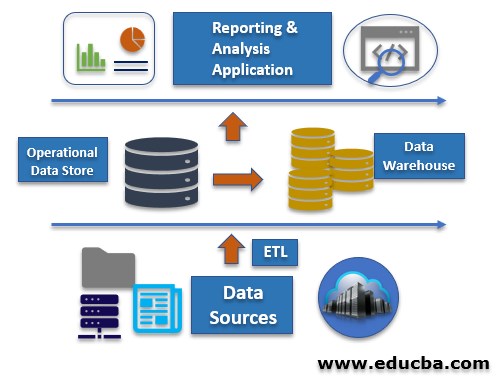Updated March 27, 2023
Introduction to Operational Data Store
An operational data store is a type of database that acts as a central repository for the data collected from different sources connected to the given data warehouse system. It consents to the benefit of merging data from multiple sources, which can have any source configuration, into a single format to make it accessible for the business decision-making processes.
ODS provides a specialized view of all the current data and related transactions, in order to make the analysis and reporting processes effortless. In the ODS, the data is cleaned to avoid junk or repetition, validated for redundancy and made sure for the data to be obeying the systematic rules set by the business/ project. This is the location where all of the data used in recent functions are held on, which is then relocated to the data warehouse’s permanent storage systems or the data warehouse’s Archives.
Implementation of Operational Data Stores
Any number of data sources can be integrated to create an Operational Data Store. For an integrated data source system to be qualified as an operational Data Store, it should comply with the below principles:
1. Subject-Oriented
The Operational Data Store should be designed and built based on explicit functional requirements presented by the business, for a certain specific area under discussion.
2. Integrated
All the data from multiple data sources of the given application undergoes a set of ETL process flow, which includes cleaning the junk data to reduce redundancy, transforming all the data into a single format and loading the entire set of records onto the ODS, based on the business/ client’s policies for data control and regularity.
3. Current/Up-To-Date
The data in the ODS is expected to be up-to-date, in order to cover all the current functions of application tied to the Data Warehouse and to show the existing status of the data from every source linked to the DW system.
4. Granularity in the Details
It is primarily used to support the operational business functions/ requirements, and so it is important for the rules to be implemented in a way that it maintains the comprehensive level of detailing the business entails for those functions to be executed.
Below is an example of how an Operational Data Store can be placed in a Data Warehouse system so as to accommodate business needs and functional requirements,
An ODS is typically constructed in a way to include low-level or completely normalized data which cannot be broken down further, with partial records from the past/ older operations that are captured in the current or the recent functions. Whereas, a Data Warehouse system can hold a much larger quantity of data that is used to perform functional operations in lesser regular periods of time. Thus Operational Data Store acts as a transitional database, as one of the sources of the organized and processed data for a data warehouse system.
An ODS is intended for comparatively uncomplicated querying of small quantity of data, instead of the problematic querying for retrieving large amounts of data from the data warehouse systems. An ODS is similar to the ROM (Read-only Memory) of the computer, which is used to store only the recent information or the current processing information. A data warehouse is similar to a RAM (Random Access Memory) of the computer, which can be used as a long term storage unit for comparatively stable data/ information. Few of the necessary functional behavior of an ODS includes the below characteristics,
- It contains fast, configurable, easily accessible real-time comprehensive data.
- It occupies lesser space as the data and operations are compressed.
- SQL enables convenient access to real-time data.
- Simple systematic management of actions and reviews.
- Flexible connection to all the integrated applications in the system.
- It makes it unproblematic to handle huge data transactions as it does not involve a huge amount of historical data.
- As the size is expected to be small, back-up and recovery processes can be made effortlessly.
- ODS provides input for creating a view board in the form of tables for the current data, and trends in the form of charts.
Advantages of Operational Data Stores
It is a beneficial database in comparison to a data warehouse system as a whole. Below are the justification for its advantageous nature:
- An ODS provides access to only the current, finely crumbled, non-aggregated, less complicated data, which can be queried in a well-fitted approach without using the operational systems.
- When the Reporting & Analysis tools need data that are closer to real-time operations, it can be queried from the Operational Data Store, as and when it is received from the respective source systems, instead of opting for more prolonging conversion and loading operations from the other database sources in the data warehouse systems.
- ODS is a secure option as it does not contain all the historical data and operations, which makes it resilient for any cyber-attacks or hacking of data privacy.
- It is a practically feasible structural design option when bearing in mind the complex requirements provided by the business, in order to generate input for analysis and reporting processes that leads to business decision-making.
- ODS facilitates considerably less total time for turnaround when in trouble, like the environment failure or when a database needs a restart, which implicates less stress on the business or the stack holders of the application.
- In order to fetch data from an ODS, querying need not be complex or with multi-level joins and conditional Simple queries will be sufficient enough as it holds moderately detailed operational data.
Conclusion
To conclude, Operational Data Store is a choice for a central database system that accepts data from multiple data sources, after a series of ETL operations performed in turn to organize all those data into a single format. ODS stores current or recent data and related operations, in contrary to a data warehouse system that stores all the historic data and operations. ODS keeps feeding the old data to the data warehouse system, consecutively to Archive the same. The results fetched from ODS is used for creating analysis and reports for business decision-making practices.
Recommended Articles
This is a guide to the Operational Data Stores. Here we discuss the introduction and implementation of Operational Data Stores along with its advantages. You may also look at the following articles to learn more-





